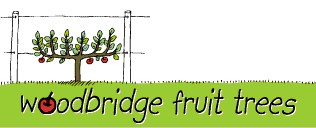No products
 View larger
View larger
Codling Moth Control
by Nik Magnus | © 2020 Woodbridge Fruit Trees | www.woodbridgefruittrees.com.au
Codling moth Control
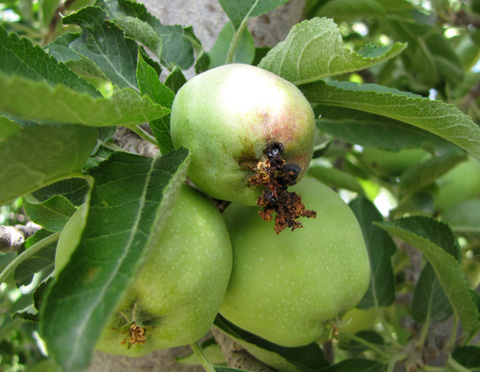
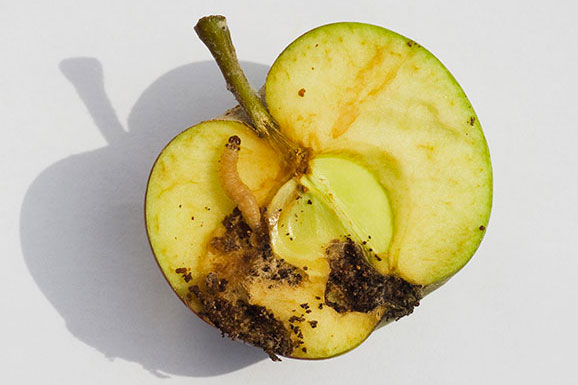
This troublesome worm that can affect apples, pears and quinces, and can devastate a whole trees fruit at different stages of the fruit maturation. The culprit is a moth is 10-15mm long that lays tiny pin head eggs in September which then hatch into caterpillars after 10 days where it feeds on leaves before moving onto fruit. It feasts on the fruit for 3-5 weeks to fatten up, after which it leaves the fruit looking for a suitable place to spin a cocoon. This is usually under loose bark around the base of the tree or in the ground. After hatching into moths, the female flies around at night, mating with the male, then laying her eggs on a leaf and the whole cycle continues. There is usually 2-3 cycles per growing season.
The colding moth is difficult to get rid of, but there are some simple measures that will help you reduce your infestation and allow you to keep the majority of your fruit. If you're diligent, after a few years there will be almost non, without resorting to harmful chemicals.
What to do about coddling moth?
Hygiene - remove all effected fruit as you see the grub - especially the wind falls. Remove loose bark and crevices where they might reside. Remove all prunings and dead branches from the base of the tree that might host the unhatched cocoon and replace with clean mulch.
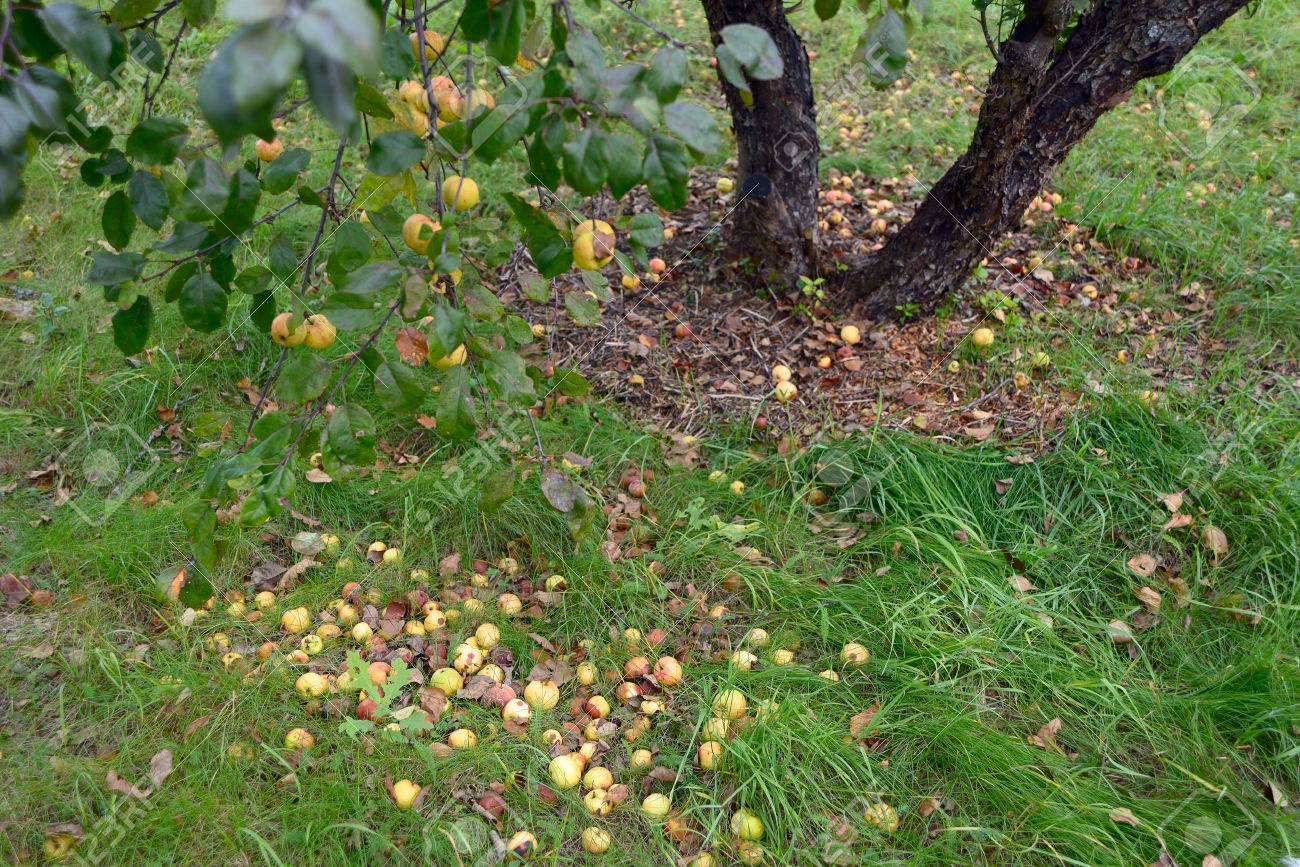
Pheromone traps - hang these delta traps in the tree to attract the male moth - preventing mating so that the female lays sterile eggs. replace every 3-4 weeks. Available here
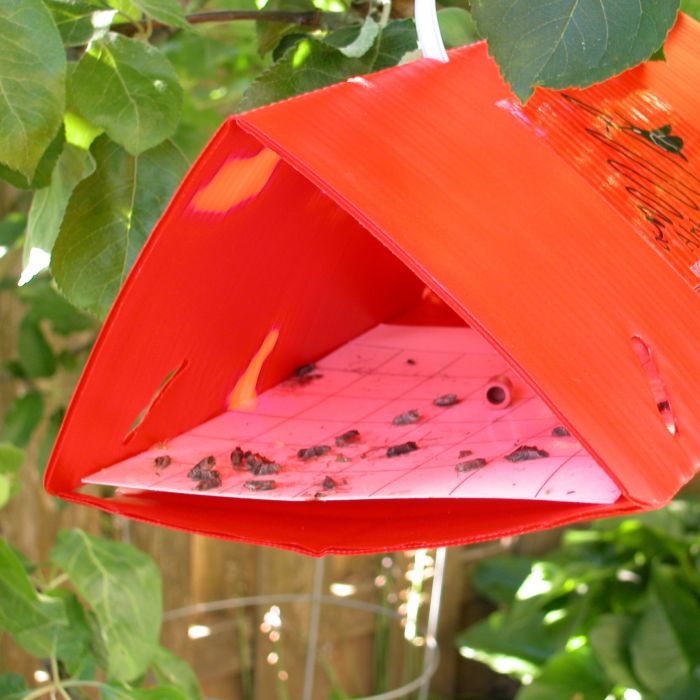
Hang up moth traps - a 2-4L bucket or milk container with holes in it containing a sweet liquid. There are plenty of homemade recipes - sugar, molasses, apple juice. Some include yeast to increase fermentation and some include a little oil to prevent the moths escaping.
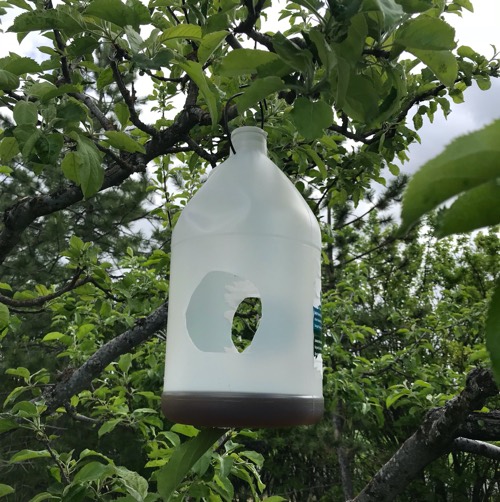
Corrugated Cardboard Bands - these are wrapped around the base of the tree and fixed with packing tape or a staple. These provide an ideal spot for the grub to pupate. The grubs spin their cocoons and can be destroyed before they turn into moths. Replace every three weeks or so. Apply during winter and the whole of the growing season.
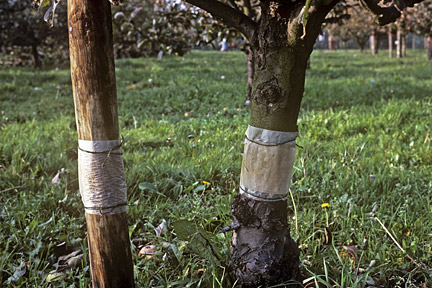
Horticultural Glue - this ensnares the moth as it crawls up the trunk after hatching. Apply some masking tape or similar around the trunk below the corrugated cardboard, and cover in glue. This will also form a barrier for the descending grubs forcing them to pupate in the cardboard. Replace every 3 weeks. Available here.
Spray with spinetoram - (eg Yate's Success) an extract from a soil bacteria that kills caterpillars and cherry slug. It only works when ingested by the caterpillar so timing is important. Apply about 1 weeks following snaring moths in the delta trap (see above) which indicates mating / egg laying.
Usually these steps dont completely get rid of the codling moth, but can reduce it to acceptable levels.
This product is no longer in stock
by Nik Magnus | © 2020 Woodbridge Fruit Trees | www.woodbridgefruittrees.com.au
Codling moth Control


This troublesome worm that can affect apples, pears and quinces, and can devastate a whole trees fruit at different stages of the fruit maturation. The culprit is a moth is 10-15mm long that lays tiny pin head eggs in September which then hatch into caterpillars after 10 days where it feeds on leaves before moving onto fruit. It feasts on the fruit for 3-5 weeks to fatten up, after which it leaves the fruit looking for a suitable place to spin a cocoon. This is usually under loose bark around the base of the tree or in the ground. After hatching into moths, the female flies around at night, mating with the male, then laying her eggs on a leaf and the whole cycle continues. There is usually 2-3 cycles per growing season.
The colding moth is difficult to get rid of, but there are some simple measures that will help you reduce your infestation and allow you to keep the majority of your fruit. If you're diligent, after a few years there will be almost non, without resorting to harmful chemicals.
What to do about coddling moth?
Hygiene - remove all effected fruit as you see the grub - especially the wind falls. Remove loose bark and crevices where they might reside. Remove all prunings and dead branches from the base of the tree that might host the unhatched cocoon and replace with clean mulch.

Pheromone traps - hang these delta traps in the tree to attract the male moth - preventing mating so that the female lays sterile eggs. replace every 3-4 weeks. Available here

Hang up moth traps - a 2-4L bucket or milk container with holes in it containing a sweet liquid. There are plenty of homemade recipes - sugar, molasses, apple juice. Some include yeast to increase fermentation and some include a little oil to prevent the moths escaping.

Corrugated Cardboard Bands - these are wrapped around the base of the tree and fixed with packing tape or a staple. These provide an ideal spot for the grub to pupate. The grubs spin their cocoons and can be destroyed before they turn into moths. Replace every three weeks or so. Apply during winter and the whole of the growing season.

Horticultural Glue - this ensnares the moth as it crawls up the trunk after hatching. Apply some masking tape or similar around the trunk below the corrugated cardboard, and cover in glue. This will also form a barrier for the descending grubs forcing them to pupate in the cardboard. Replace every 3 weeks. Available here.
Spray with spinetoram - (eg Yate's Success) an extract from a soil bacteria that kills caterpillars and cherry slug. It only works when ingested by the caterpillar so timing is important. Apply about 1 weeks following snaring moths in the delta trap (see above) which indicates mating / egg laying.
Usually these steps dont completely get rid of the codling moth, but can reduce it to acceptable levels.
Reviews
No customer reviews for the moment.
